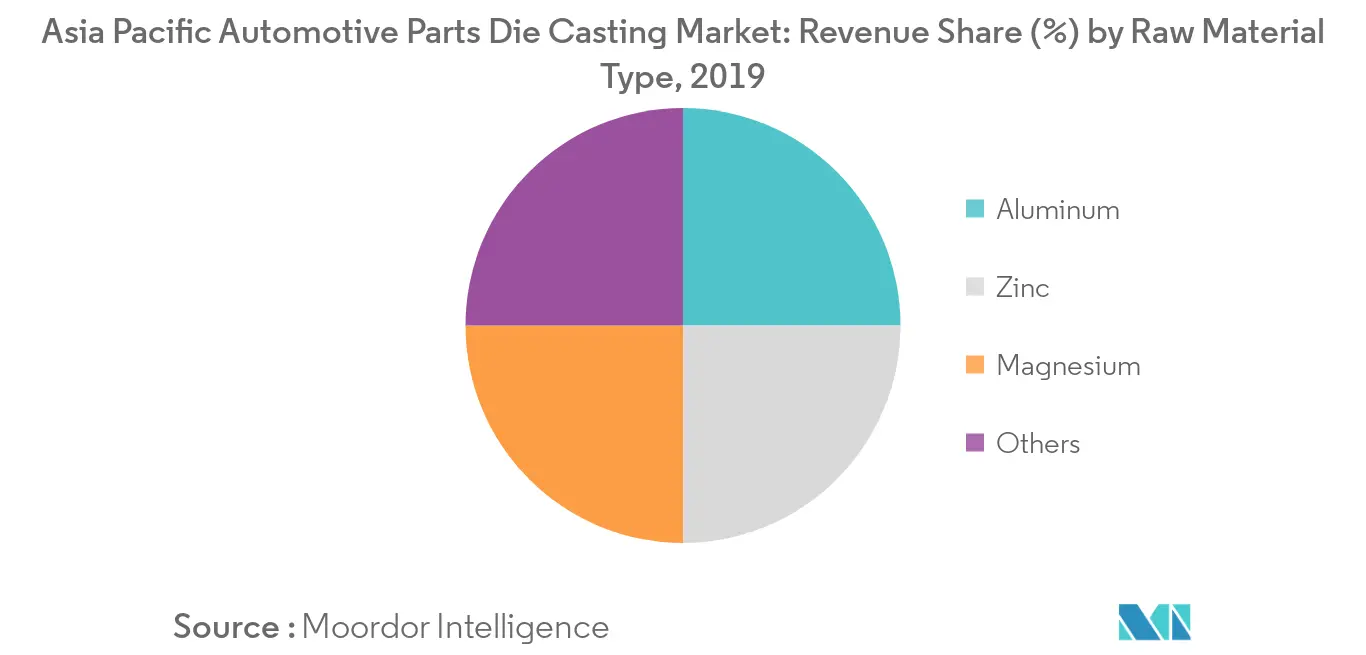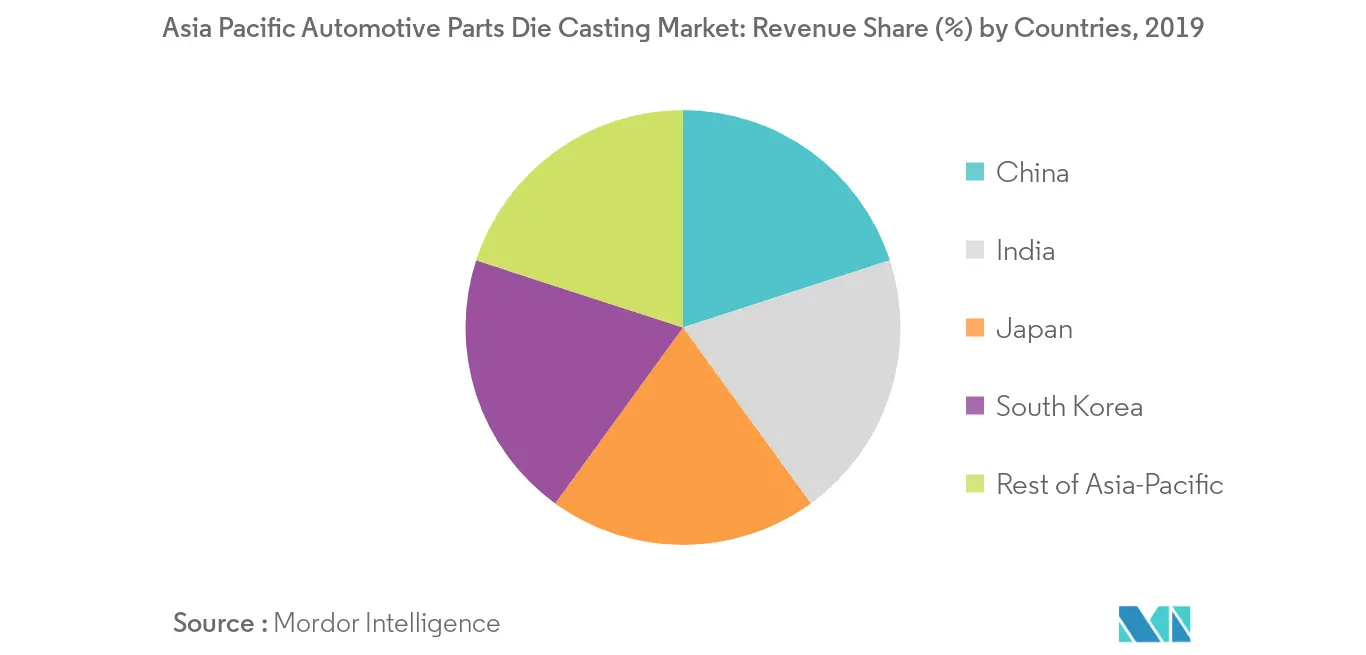Market Trends of Asia Pacific Automotive Parts Die Casting Industry
This section covers the major market trends shaping the APAC Automotive Parts Die Casting Market according to our research experts:
Aluminium is Expected to Grow With Highest CAGR
With technological advancements, manufacturers are expected to see a rise in demand for car exports which intern will increase demand for Aluminium die casting automotive materials as manufacturers are looking to reduce car weight to keep up with emission norms across the world.
Aluminum has the highest growth rate in terms of metals used in the automotive industry. Aluminum has achieved this high growth rate because it was largely supported by the substitution of many parts of the powertrain with die casting parts. With the introduction of electric automobiles in the market, the growth rate is expected to grow during the forecasted period. 90% of the Aluminium used in the automobiles can be recycled, which is proving to be more profitable for the OEMs as compared to steel. Recycling Aluminium can save the equivalent of 108 million barrels of crude oil.
As world is racing towards reducing energy usage, the Aluminium dies casting market is expected to grow during the forecasted period. Die casting industries are focusing on developing conformal cooling, joining technologies, heat treatment, and hybrid components. Recently, Intelligent temperature control for die casting has been developed which helps in reduction of porosity in the surface which results in higher casting quality, process stability, and high tool life.
China and India ranked top two in list of primary aluminium production in the world with 33,000 and 3,700 metric tons produced in 2018. With increasing manufacturing capacity, these two regions are expected to fulfil global aluminium die casting demand. Most OEMs are preferring to import Aluminium die casting parts from these two countries because they are cheaply available and help to keep up with the government pollution norms. A slowdown in global economic growth, and structural change in the automotive industry are hurting this market.

China Captures the Largest Market Share
Chinese automotive exports are heavily influenced by global economy and environmental regulations. Recent changes in the regulations across the world has had little to no impact on the growth rate of sales in 2019. In 2019, around 285,000 commercial vehicles and 725,000 passenger cars were exported from China. Since a few years back, China has been world's largest car production country. Over one quarter of the global passenger cars were manufactured in China in 2018, exceeding the overall share of the European Union. In other car markets, Chinese car brands enjoy a significant cast advantage over imported cars from international automobile manufacturers. Thus, other developing countries and emerging markets were the main export destinations for Chinese vehicle and die casting exports.
As governments from around the world are implementing stringent emission regulations and even are planning to set even higher emissions standards in the coming years, the importance of lightweight materials will increase. According to European directives and standards (2000/53/EC-End Life 0f Vehicles), US Department of Transportation, US EPA, China 6 standard, Bharat Stage Emission Standards and many more, the automotive manufacturing industry has to follow certain norms in regarding environmentally friendly recycling and dismantling of vehicles, higher fuel efficiency standards, and increase in use of recyclable materials which offers high potential for the China automotive die casting market to grow during the forecasted period.


